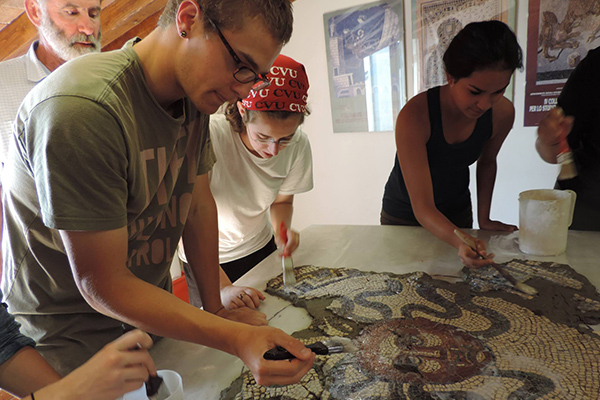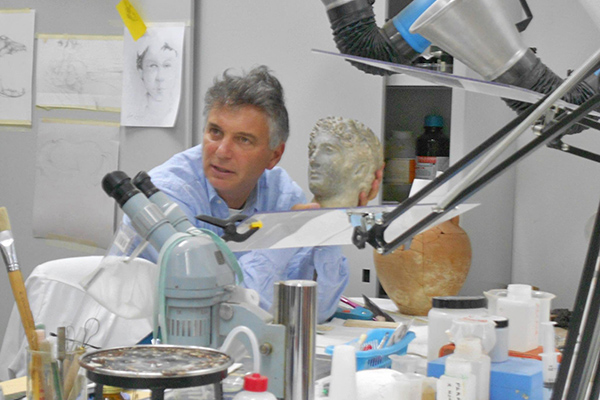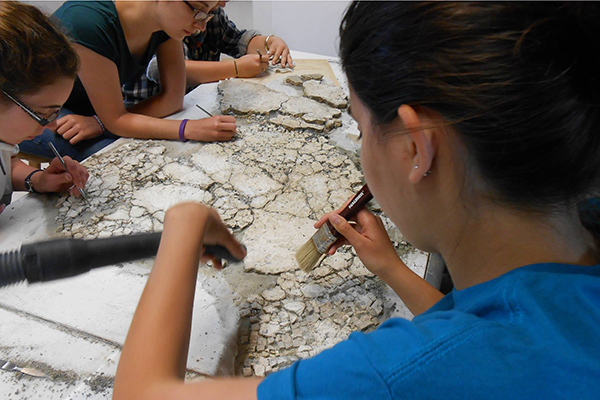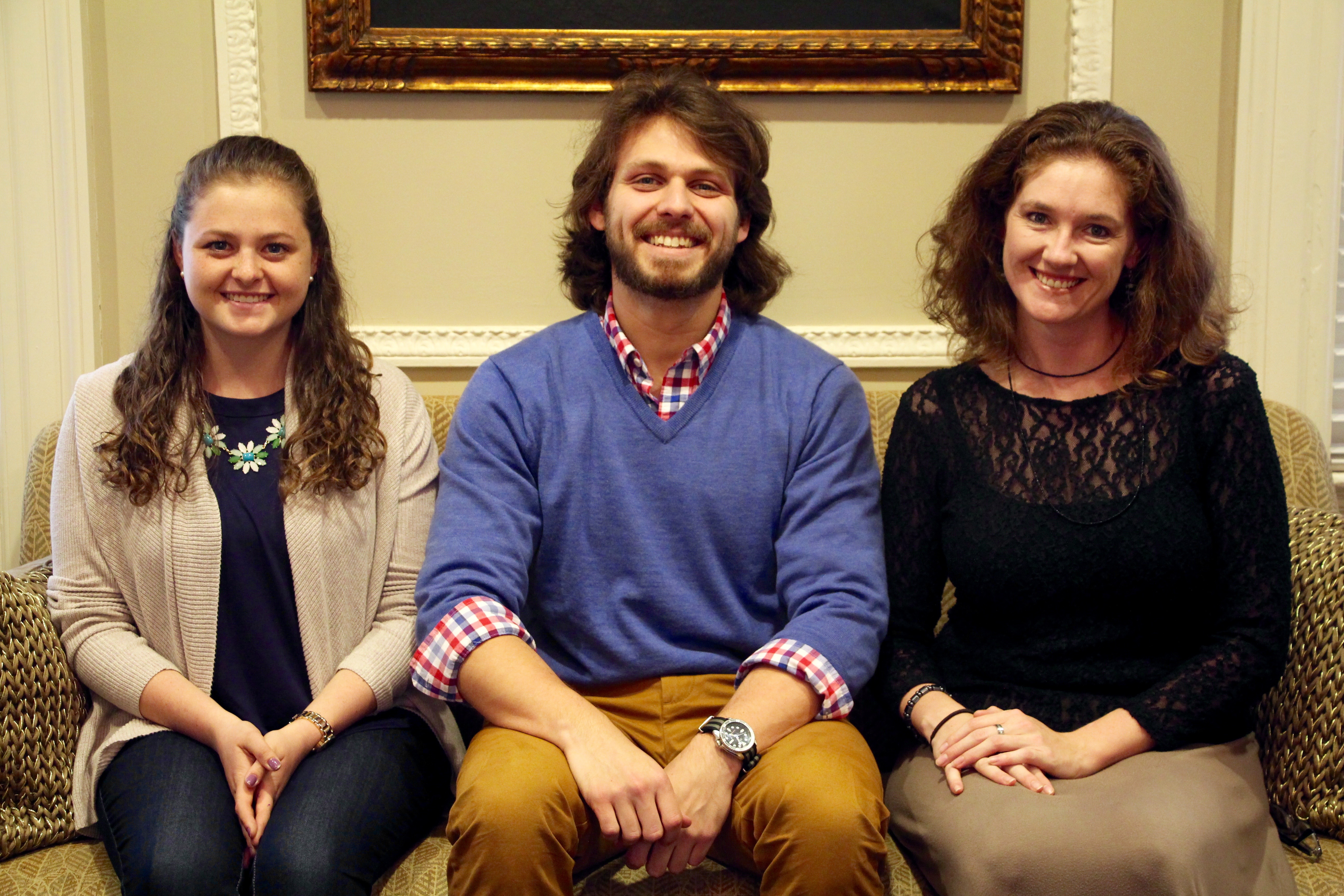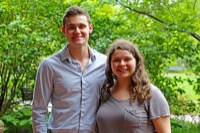

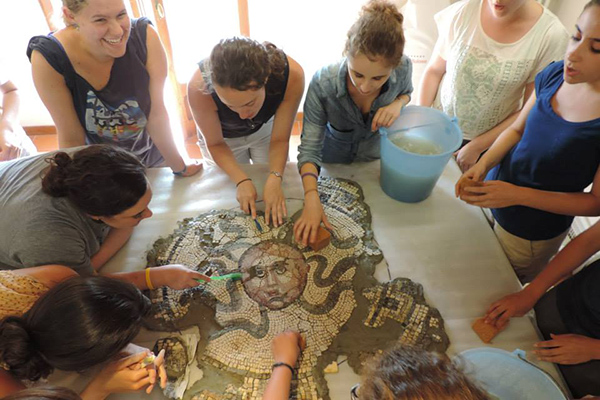
Saving Medusa
UD art conservation students preserve ancient mosaic in Italy
9:16 a.m., July 11, 2013--Beautifully lifelike depictions from mythology often graced the ground floor of ancient Roman villas. Made from colored stone and glass, these intricate mosaics showed scenes from battles and warriors, gods and demons.
One featured Medusa as the central medallion, her swirling snakes swinging wildly about her head.
Global Stories
Fulbright awards
Peace Corps plans
Dated somewhere around the second century, it remained buried for centuries on the island of Sardinia until its discovery in 2010. This June, 14 University of Delaware art conservation undergraduates and one graduate student worked with a famed conservator to excavate and preserve the remaining salvageable pieces from the ancient mosaic.
Blogging their experience, the students worked with Roberto Nardi, one of the world’s leading archaeology and mosaic conservators, to excavate the pieces and transport them to a workshop in a converted 13th-century Franciscan convent outside of Rome, where they began to piece together the fragments of the central medallion of the Medusa mosaic.
The students also studied under Roberto Cassio, director of Vatican Museums Restoration Laboratory for Mosaics, who uses traditional Roman materials and techniques to reproduce and restore classic, religious and modern subjects and portraits.
“Introducing us to the new mosaic material he uses, comprised of glass with metals and minerals, he walked us through his method of creating tesserae (out of small glass rods) and melting and molding them with a blowtorch,” the students wrote in a June 21 blog post. “After sufficiently stretching the melted tesserae to the desired thickness, we practiced breaking the tesserae and learned how to place them on the mosaic, eager to try and match Roberto’s perfect technique.”
In addition to their excavation and conservation work on the Medusa mosaic, the students spent their spare time touring Rome, Sardinia, Assisi and Spoleto; meeting famed sculptors, such as Norman Rockwell’s son, Peter Rockwell, and iconic conservator Gael de Guichen; and visiting conservation labs, including the stone, painting and mosaic labs of the Museo Vaticani.
“This was the first time the department has offered this experience, and we certainly hope to do more,” said Vicki Cassman, associate professor and undergraduate director of the art conservation program. “Our students returned with a deeper appreciation and understanding of conservation, not just as something we study in class, but as something that has a profound impact on culture and society across the globe.”
Article by Artika Casini




